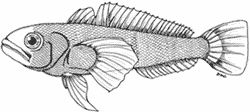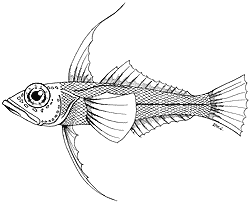|

A
Species Cornucopia
We left our story off when Antarctic marine fish without antifreeze
proteins disappeared, and one ancestral antifreeze-carrying
Notothenioid species remained.
The
Notothenioids had a great ecological opportunity. Because
the Antarctic seas were mostly empty of fish, they had minimal
competition for food or habitats. Exploiting this ecological
vacuum, the Notothenioid populations ballooned in size and
migrated into the region’s different habitats (such as
the surface ice cover and ocean-floor spongebeds), breaking
up into different subpopulations.
Over
time, the subpopulations adapted to the unique features of
each habitat, eventually becoming different enough to turn
into new species. These adaptations resulted in an explosion
of more than 90 new Notothenioid species that predominate
in the Antarctic ecosystem today.
In
the language of ecology, this species expansion is known as
adaptive radiation—broadly defined as the process of
a "parent" species colonizing empty habitats and
multiplying into new species.

Bald
notothen
(
Pagothenia
borchgrevinki
)
(
click
for a larger image)
|
|
©
Danette St.Onge
|
|

Threadfin
pithead
(
Aethotaxis
mitopteryx
)
(
click
for a larger image
)
|
|
©
Danette St.Onge
|
|
|
Of
these two Notothenioids, the
threadfin pithead
lives in deep-sea habitats (about 2000 feet deep) while
the
bald notothen
lives along the underside of
the surface ice layer, often burrowing inside the ice.
Comparing the illustrations reveals how adapting to different
habitats can result in different body features.
|
|
